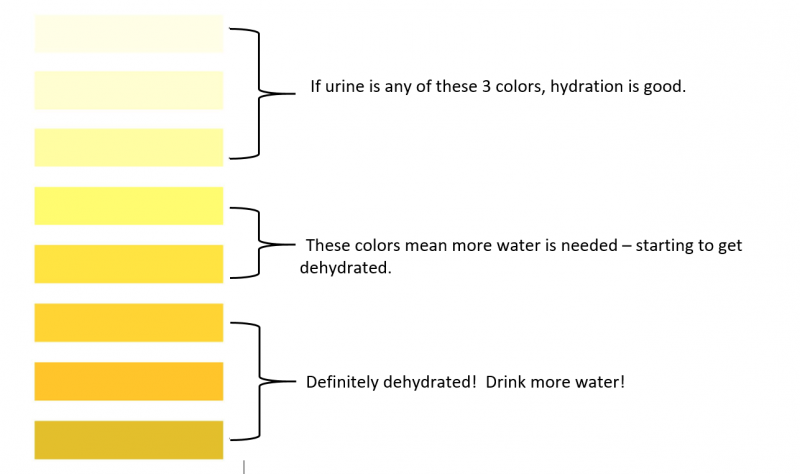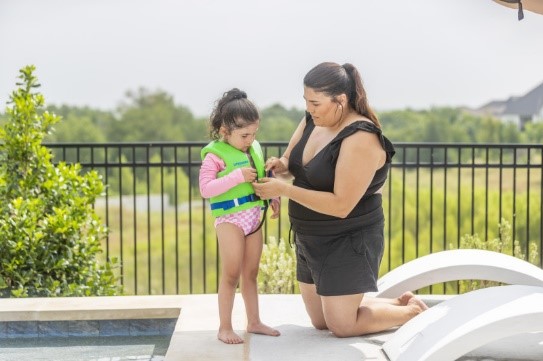Summer Safety: Keeping Kids Safe During the Warm Months
Summer is a time for fun in the sun, but it’s also a critical time to prioritize child safety. Over Memorial Day Weekend, Cook Children’s Medical Center – Fort Worth experienced a rise in drownings, sunburns, dehydration, and injuries from ATVs, dirt bikes, and even fish hooks. This article serves as a reminder for parents and caregivers to be vigilant as children participate in summer activities.
“While we are ecstatic that children are finding ways to get exercise and enjoy being outside, we want to remind parents to make sure that kids are protected while having fun,” said Kara Starnes, D.O., medical director of Urgent Care at Cook Children’s.
Helmets are a Must for Fun on Wheels

ATV and dirt bike crashes are a common occurrence during summer. Over Memorial Day Weekend, the emergency department in Fort Worth saw 10 injuries related to motorcycles, dirt bikes, ATVs and skating.
Always ensure your child wears a properly fitted helmet to avoid head injuries. Adult supervision is essential when a child is riding any motorized vehicle, and children should never ride on ATVs or dirt bikes designed for adults.
“Please supervise your children on motorized vehicles,” Taylor Louden, M.D., medical director of Pediatric Emergency Medicine at Cook Children’s Medical Center – Fort Worth said. “They should always be wearing their seat belt and appropriate safety gear. The start of summer is a great time to check your kids’ safety gear and make sure helmets fit appropriately and are in good condition.”
A helmet that fits correctly will feel snug but not uncomfortable.
A few other key points:
- Helmets that passed federal safety standards in testing will say “U.S. Consumer Product Safety Commission certified” on the label.
- Helmets should be worn in a level position just above the eyebrows.
- If the helmet rocks backward and forward or side to side, adjust the straps. No more than two fingers should fit under the buckled chin strap.
- Never ride without a helmet.
Water Safety: A Constant Vigilance
Drowning is the leading cause of accidental death for children ages 1 to 4, and the second leading cause for kids 1-14 in Texas. Drownings can happen silently and quickly. A submerged person might not attract attention or appear to be in danger. These tragedies highlight the importance of constant supervision around water.
Sharon Evans, trauma injury prevention coordinator at Cook Children’s, emphasizes, “There’s no off-season for drownings. A moment of inattention can be devastating.”
Unplanned swim time is a major culprit, with roughly 70% of drownings at Cook Children’s occurring when parents weren’t expecting their child to be near water.

Layers of Protection: Keeping Curious Toddlers Safe
Multiple safety measures, known as “layers of protection,” can significantly reduce drowning risks. Fencing around pools with self-latching gates, preferably 5-feet high, is crucial. Door and window alarms can alert you if a child exits the house unsupervised. Remember, young children are naturally curious, so removing pool toys and floats when not in use minimizes temptation. For above-ground pools, make sure to remove the ladder when the pool is unsupervised. Consider using a pool surface alarm for added security.
Cook Children’s has developed the “Lifeguard Your Child” campaign to raise awareness about childhood injury prevention. Through this initiative, you can find resources like free swim lessons, safety videos, and loaner life jacket stations at lakes across North Texas. Visit lifeguardyourchild.org for more information.
Sun Safety: Protecting Young Skin
Sunburns are not just uncomfortable; they can increase a child’s risk of skin cancer later in life. Zinc oxide-based sunscreen is best whenever your child is outdoors. Covering skin with SPF is another way to protect your child’s skin. Apply sunscreen generously 30 minutes before sun exposure and reapply every two hours, or more often after swimming or sweating. Protective clothing, hats with wide brims, and sunglasses that block UV rays offer additional defense.
Hydration: Keeping Cool and Healthy
Dehydration can lead to nausea, dizziness, headache, or even heat stroke. Encourage frequent sips of water throughout the day, even if your child doesn’t feel thirsty. Avoid sugary drinks that can worsen dehydration.
Your child’s urine colors can range from clear to dark yellow to orange, depending on how hydrated they are. To tell if your child is dehydrated, read this article from Celina D. Cepeda, M.D., a nephrologist at Cook Children’s Medical Center – Prosper.

Fishing Fun Without the Hooks
Fishing is a popular summer activity, but fish hooks can pose a safety risk. Teach children to handle hooks with care and supervise them closely while fishing. Consider using barbless hooks to minimize injury if a hook snags on skin.


